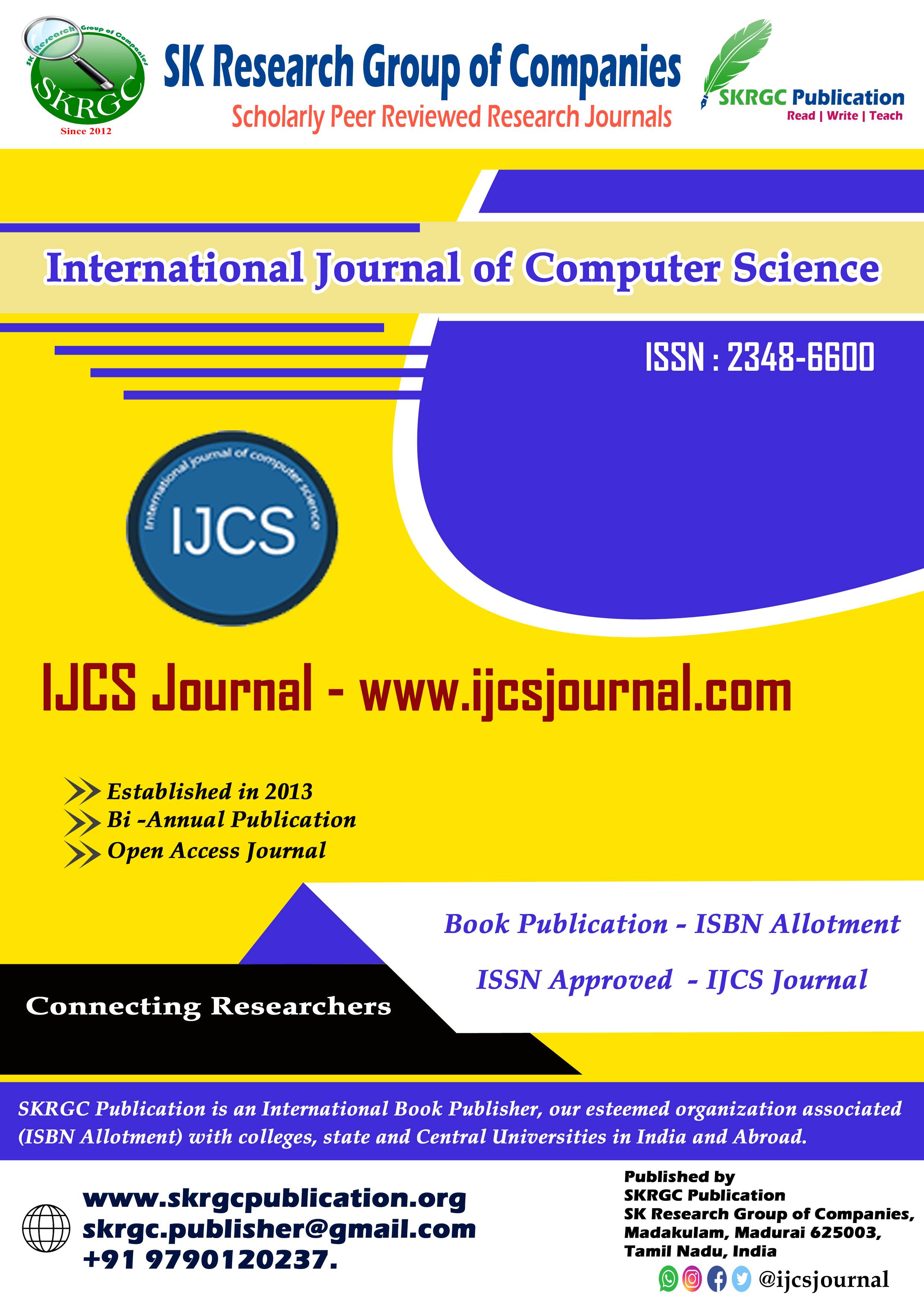Web Based Machine Learning Approach For Identifying Diseases-Treatment
International Journal of Computer Science (IJCS) Published by SK Research Group of Companies (SKRGC).
Download this PDF format
Abstract
This project assists user to identify disease by entering symptoms from their home or in workplace. In current system people does not have complete knowledge about the signs of disease. In current system, a patient has to come to the hospital and has to take doctor’s appointment. But using this project, a patient can logon to the web site and get the required details. Hence data retrieval can also be very easy and faster. If any person needs more information about particular disease, they have to visit doctor or some healthcare institute. But in some cases, user cannot get proper information. This project helps users to get rid of disease by providing the prevention details. In this doctor can enter the disease details along with its signs. Doctors also add treatment to heal the disease and prevention details. Users of this portal should register before login. User can search disease by entering symptoms or get symptoms by selecting disease. If user suffers from any disease can get the treatment details and also prevention for that disease. Admin of this website has entire control. Admin can view the users and doctor’s details. Admin grant permission for doctors to login. User may have queries about treatment or disease. This web portal helps user to communicate with doctors to clarify doubts from anywhere.
References
[1] M. Craven, "Learning to Extract Relations from Medline", Proc. Assoc. for the Advancement of Artificial Intelligence, 1999.
[2] C. Friedman, P. Kra, H. Yu, M. Krauthammer and A. Rzhetsky, "GENIES: A Natural Language Processing System for the Extraction of Molecular Pathways from Journal Articles", Bioinformatics, vol. 17, pp. 74-82, 2001.
[3] Alimadadi, S. Aryal, I. Manandhar, P. B. Munroe, B. Joe, and X. Cheng, “Artificial intelligence and machine learning to fight COVID-19,” Physiological Genomics, vol. 52, no. 4, pp. 200–202, 2020.
[4] J. Goecks, V. Jalili, L. M. Heiser, and J. W. Gray, “How machine learning will transform biomedicine,” Cell, vol. 181, no. 1, pp. 92–101, 2020.
[5] M. T. Vafea, E. Atalla, J. Georgakas et al., “Emerging technologies for use in the study, diagnosis, and treatment of patients with COVID-19,” Cellular and Molecular Bioengineering, vol. 13, no. 4, pp. 249–257, 2020.
[6] M. T. Vafea, E. Atalla, J. Georgakas et al., “Emerging technologies for use in the study, diagnosis, and treatment of patients with COVID-19,” Cellular and Molecular Bioengineering, vol. 13, no. 4, pp. 249–257, 2020.
[7] M. T. Vafea, E. Atalla, J. Georgakas et al., “Emerging technologies for use in the study, diagnosis, and treatment of patients with COVID-19,” Cellular and Molecular Bioengineering, vol. 13, no. 4, pp. 249–257, 2020.
[8] B. R. Shatte, D. M. Hutchinson, and S. J. Teague, “Machine learning in mental health: a scoping review of methods and applications,” Psychological Medicine, vol. 49, no. 9, pp. 1426–1448, 2019.
[9] Bansal, R. P. Padappayil, C. Garg, A. Singal, M. Gupta, and A. Klein, “Utility of artificial intelligence amidst the COVID 19 pandemic: a review,” Journal of Medical Systems, vol. 44, no. 9, pp. 156–6, 2020.
[10] A. Jamshidi, J.-P. Pelletier, and J. Martel-Pelletier, “Machine-learning-based patient-specific prediction models for knee osteoarthritis,” Nature Reviews Rheumatology, vol. 15, no. 1, pp. 49–60, 2019.
Keywords
Health Information, Doctors, Disease, Machine Learning.

